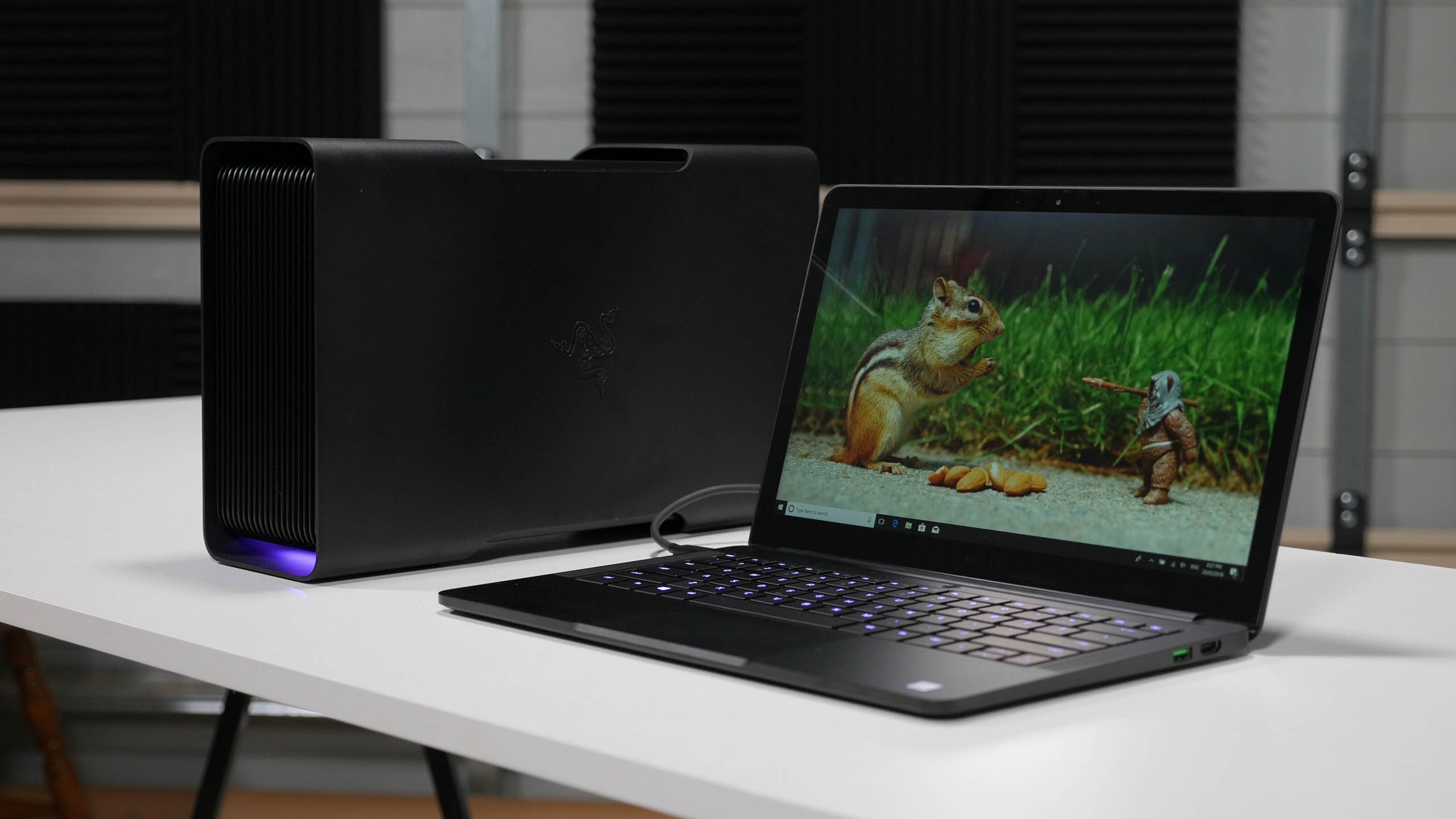Core V2 Performance
I was most curious about the dual-Thunderbolt controller in the Core V2. I did have some problems hooking up USB peripherals reliably to the Aorus Gaming Boxes on some laptops, though I can say I had no such issues with the Core V2, which is good news as they switch to dual controllers specifically to address the problem.
However the use of dual controllers doesn't increase the bandwidth available to the GPU through the Thunderbolt 3 cable, whether the USB ports are utilized or not. The GPU is still limited to PCIe 3.0 x4, a 32 Gb/s protocol, and then further reduced by Thunderbolt 3's overhead and limitations to around 20 to 22 Gb/s.
In my testing, there was no real-world difference in GPU bandwidth or performance between the dual-controller Core V2 and what I believe is the single-controller Aorus Gaming Box, even while performing a file copy from an SSD attached to the eGPU. The situation with both boxes is the GPU bandwidth is reduced if you use any of the USB ports or Ethernet functionality.
What the dual controllers appear to solve is bandwidth allocation on the eGPU itself, ensuring enough room is given for USB devices and so forth before the data is sent through the Thunderbolt 3 cable. Crucially, it appears these decisions occur at lower latency, such that peripheral support is much better. That's the advantage.
| Razer Core V2 | GTX 1080 Gaming Box | |
| Host to Device | 2.23 GB/s | 2.21 GB/s |
| Device to Host | 2.66 GB/s | 2.64 GB/s |
| Host to Device (with file copy) | 2.06 GB/s | 2.05 GB/s |
| Device to Host (with file copy) | 2.26 GB/s | 2.23 GB/s |
As for thermals and noise levels, this is almost entirely determined by the GPU you choose at load: the additional fans in the Core V2 are going to be quieter than the GPU fan while gaming in almost every case, and of course the GPU is the main source of heat. At idle, the Razer Core V2 isn't super quiet with a silent GPU inside, the Aorus Gaming Box is quieter, but it's not going to burn your ears out either. And you could just unplug it while you're not using it, which shuts off the unit entirely.





I've left gaming performance to the end because this is entirely determined by the graphics card you choose to use with the Core V2. Here I've tested with an Nvidia GeForce GTX 1060 6GB, as it's one of the most popular GPUs on the market and will likely be a popular choice for those buying a Razer Core V2. As there's no inherent performance difference among eGPUs, if you're interested in GTX 1080 performance, check our coverage of the Aorus GTX 1080 Gaming Box.
I hooked up the Core V2 to the Razer Blade Stealth with the Core i7-8550U inside, which I also used for testing the Aorus Gaming Box. The basic gist is the combo is well suited to 1080p gaming, though not always at the maximum detail levels. Stuttering is an issue in some games due to Thunderbolt 3 bandwidth limitations, but most games run well provided you choose the settings to suit the hardware.
This combo does clock in 20 percent slower than a true GTX 1060 gaming laptop on average, due to a range of bottlenecks, though oddly, you can eek out more performance by slotting in a faster GPU: something like the GTX 1080 is going to be 33 percent faster than the GTX 1060 eGPU combo we tested with. This is a strange result and suggests latency is the main cause of slowdowns with eGPUs, but we'll have to do some more benchmarking to understand the bottlenecks in more detail.
In general, though, if you have an ultraportable laptop without a gaming-capable GPU, something like the Razer Core V2 will significantly improve the gaming performance and actually make games playable in almost all cases. Even if you don't get the 'full' performance of the GPU you choose to put in the Core, the performance you will get is worlds better than having no GPU at all.
